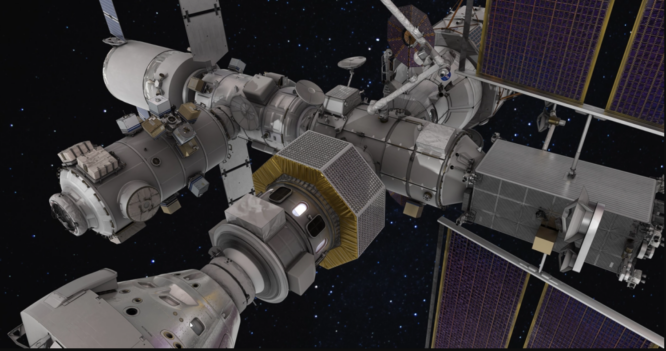The International Space Station (ISS) was humanity’s only off-world home for more than 20 years, but today, two continuously staffed space stations orbit Earth, and the number could soon expand.
The backdrop
After demonstrating they could transport people to space and the moon in the 1960s, the US and USSR focused on creating spacecraft to house humans in Earth’s orbit in the 1970s.
These space stations might survey space and Earth, conduct microgravity research, and prepare astronauts for solar system trips.
In the 1970s, both nations launched and crewed temporary stations like Skylab. In the 1990s, the Russian and American space agencies collaborated with Japan, Europe, and Canada to build the International Space Station.
Since November 2000, when the first crew landed at the ISS five months after the final crew left Mir, the space station has been constantly manned, offering scientific advances in astronomy, physics, medicine, and more.
In January 2021, NASA announced intentions to deorbit the ISS in 2031 due to its aging.
Since November 2000, the ISS has been occupied.

Beyond the ISS
China launched the first module of Tiangong, a three-astronaut space station, in April 2021. Since two months ago, it has had a crew.
Today, several new space stations are being developed by non-national space agencies. These are likely to launch soon.
Moon Gate
NASA, Canada, Europe, and Japan’s space agencies are building a space station near the moon, about 240,000 miles from the ISS, instead of in low Earth orbit (LEO).
NASA aims to start building the Lunar Gateway space station in 2024 and use it to keep humans on the moon and send astronauts to Mars and beyond.
“Through Gateway, NASA is extending over 20 years of discovery, research, and international collaboration in low Earth orbit to deep space, starting at the moon,” stated Gateway Program manager Dan Hartman.
Russian Orbital Service Station
Russia declared in 2022 that it would leave the ISS in 2024 to build the Russian Orbital Space Station (ROSS).
Russia plans to launch ROSS in two phases between 2025 and 2030 and 2030 and 2035. Russia will deploy crews to the space station twice a year after the first stage launches.

ISRO Space Station
India wants to build a space station in 2035 and conduct its first crewed mission in 2024.
India expects astronauts to stay on this 22-ton station for 15–20 days, compared to the ISS’s 440 tons.

Going commercial
NASA is helping private corporations build space stations closer to Earth.
In 2020, NASA contracted Axiom Space to build up to four modules that might attach to the ISS in 2025 and detach to orbit freely after the ISS deorbits.
Three companies—Nanoracks, Blue Origin, and Northrop Grumman—received $415 million from NASA to develop LEO commercial space stations the following year. All will be habitable by 2030.
After the ISS retires in 2031, NASA may rent space on one of these stations. Meanwhile, station owners can serve other space-seekers.
“It’s like a traditional business park,” Blue Origin’s director of advanced development initiatives Brent Sherwood told TIME in 2022. “We do utilities—sewers, power lines, all that makes it usable.”
“The tenants have their own business model, whatever it might be—maybe a filmmaker or a national laboratory or a space agency,” he added. “But I’m happy if you pay your rent and don’t break my space station.”
Airbus, the world’s largest airplane manufacturer, is constructing a tri-level space station, “LOOP,” to replace the ISS without NASA’s support.
This luxurious space station comprises a greenhouse, science deck, and centrifuge level to imitate gravity for four to eight astronauts.
Airbus stated that the LOOP is meant to make long-term stays in space comfortable and enjoyable while supporting efficient and sustainable operations.

Big picture
If any of these other space stations launch, the space access market may not be substantial enough to support them all.
“I would love to be optimistic and say, yes, all four are going to be hugely successful, but the market is what’s going to drive this,” Northrop Grumman’s head of business development Rick Mastracchio told TIME.
Still, the more space stations we have orbiting Earth or the moon, the more opportunities for off-world tourism, entertainment, manufacturing, and scientific research that could help us establish space stations throughout the solar system.

